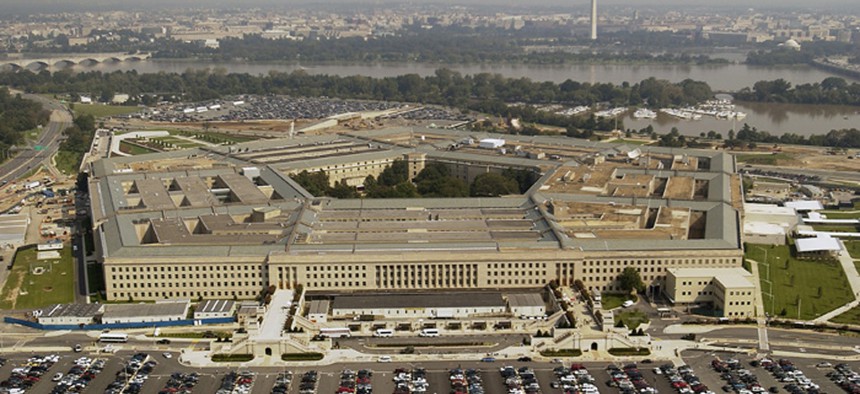
Defense Department file photo
Pentagon’s Buying Managers Resist IG’s Call for Central Oversight Office
Watchdog recommends the new office as a way to reduce delays and cost overruns.
The Defense Department’s acquisition operation would perform better with a central oversight office to improve organizational feedback on supply chain performance trends, the Pentagon inspector general said in a report released Monday.
The Office of the Defense Undersecretary for Acquisition, Technology and Logistics “has not established an overarching quality management policy to ensure the consistent application of quality management system requirements across DoD components,” the watchdog wrote. Creation of a central quality management oversight office would help reduce delays and cost overruns on major weapons systems by building in management steps “to evaluate and revise policies, procedures and guidance,” it said.
Citing past investigations and Government Accountability Office reports, the inspector general recited a litany of recent acquisition snafus: assembly of the Expeditionary Fighting Vehicle brought a four-year delay at a cost overrun of $750 million; the Advanced Threat Infrared Counter Measure/Common Missile Warning System came with a five-year delay and a $117 million cost overrun; manufacturing of the F22A Raptor Advanced Tactical Fighter was over budget by $400 million; and building of the Amphibious Transport Dock for the USS San Antonio underwent a three-year delay and a cost overrun of $846 million.
“The need for effective feedback mechanisms to institute continual process improvement has been identified in the industry as one of the critical contributors to quality management success,” the report concluded after a review of top-level policies and procedures at key Defense Department offices. “Quality management requires extensive decision making, covering a wide range of subject matter at all levels within the hierarchy of the organization.”
The report recommended that the top acquisition office:
- Establish a dedicated quality management function to provide leadership and oversight of quality management system requirements across Defense acquisition programs;
- Provide clear and concise quality management system definitions and policies for all major Defense acquisition programs that emphasize the importance of a robust quality management program throughout the entire acquisition life cycle;
- Establish quality assurance verification processes throughout the acquisition lifecycle that promote effective program and supply chain quality management systems;
- Establish standardized reporting requirements for quality assurance metrics throughout Defense to obtain the information needed to detect trends, identify threats and opportunities, and evaluate program performance;
- Establish policy that ensures Defense Contract Management Agency policies and risk-based quality assurance oversight decisions are reviewed, understood and agreed to by the program management offices.
Acquisition officials disagreed with all or part of several of the recommendations, saying that some of the problems are being addressed by the Better Buying Power 2 acquisition reforms introduced by Undersecretary Frank Kendall III. “While we agree there are benefits to central leadership, it already exists,” wrote Katrina McFarland, director of Defense acquisition resources and analysis. These quality checks “are in many cases are working poorly right now for a very simple reason: a shortage of trained and qualified acquisition professionals in the quality field.”
The IG asked for a revised response by Dec. 5.
NEXT STORY: Managing the Skills Crisis







